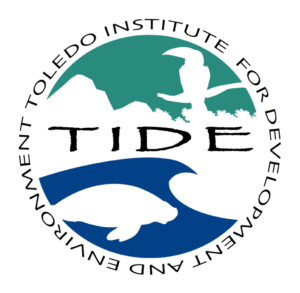TIDE began a comprehensive habitat-mapping project in Port Honduras Marine Reserve in 2013. Julia Baker, TIDE GIS specialist and James Foley, TIDE science director used remote sensing, underwater ground-truthing surveys and local ecological knowledge (LEK) to determine the spatial distribution of major habitats types such as mangroves, sea grass, coral reef, sand, and mudflats. The resolution of the data is great enough to use Mumby’s 1999 habitat classification scheme in future.
This information will allow us to visualize, question, analyse, and interpret a broad spectrum of fisheries and biophysical data to understand patterns and trends in the reserve. Using this information we can make accurate estimations of commercial species populations and improve fisheries management. Habitat mapping will also provide information on critical habitats for endangered species, such as manatees, and the best locations for alternative livelihood initiatives such as seaweed farming. Mapping projects have more recently been used for enforcement monitoring and zoning projects.
